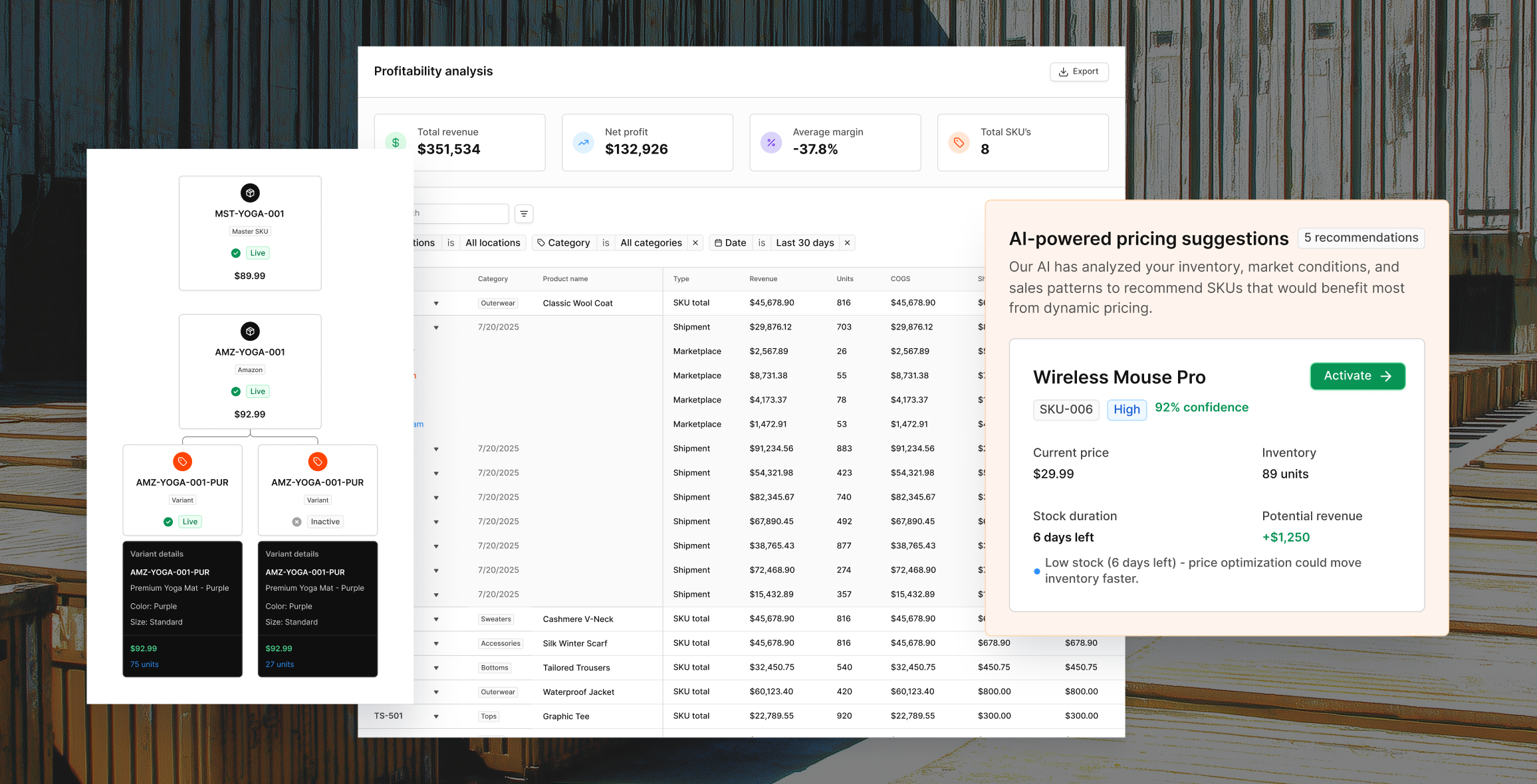Smarter Returns Management for Shopify and Beyond: Turning Returns Into Revenue



Request A Demo
Take 30 minutes to see how Redo can help you retain more revenue through a more cohesive post-purchase experience for your buyers.
If you lead operations, ecommerce, or marketing, you already feel the pressure that returns put on margin, staffing, and customer loyalty. Returns are not only a cost to be minimized. Returns are a pivotal customer experience moment that can strengthen loyalty, lift LTV, and protect contribution margin when handled with care.
Industry data shows how big the stakes are. In 2023, U.S. retail returns reached an estimated 743 billion dollars and represented about 14.5 percent of sales. Online return rates tend to be higher than store returns, which raises the operational bar even further for digital brands. These numbers explain why retailers are rethinking reverse logistics and the customer experience that surrounds it.NRF and Appriss Retail Report
In a recent conversation, Redo’s Jordan Bleak explained how the returns product plugs into the broader Redo platform, why exchange rate is a north-star metric, and how new AI features give both shoppers and merchants a better experience. This article distills Jordan’s guidance, quotes him directly, and turns it into practical steps you can ship now. It is written for leaders who care about Shopify returns, returns management at scale, and revenue retention during peak periods.
Treat the return as a growth moment
Jordan put it plainly. “Shoppers are going through such a critical part of the customer journey that is often under, under-thought about or under-utilized by brands.” The shopper just bought, something missed the mark, and they want a fast fix. If your returns portal is intelligent and personalized, you can turn a likely refund into an exchange that keeps revenue in the order.
The foundation is a connected customer record. “We are utilizing a lot of what the other products have built and plugged into that customer record to say, what have you cared about, what have you clicked on in the past, and also, why are you returning those items.” When the return reason indicates fit or fabric issues, the exchange experience should surface the right alternative and explain why it is right. Jordan shared that the team tracks exchange rate as a key outcome and that “we have continued to see that tick up” as they feed more cross product signals into the exchange agent.
On Shopify, the basics live in admin. You can enable self serve returns, approve or decline requests, and add exchange items during approval. The goal is to go beyond the basics by making the return flow dynamic and context aware.Self-serve returns
Train the exchange to reflect your category nuance
Apparel, denim, swim, intimates, footwear, and fitted accessories rarely succeed with generic “try a size up” logic. Jordan described how Redo added brand authored association logic that gives the AI context for why one product is a better alternative than another.
His words: “We introduced taking collections and associating them with other collections, but in a way that is actually giving the AI context on why they are associated.” The outcome is not only more exchanges, it is better post exchange satisfaction. “You have a better shot at both retaining the revenue there, but also retaining it after the fact, and keeping a customer for life.”
Practical move for your team this week. Export your top return reasons by product type. For each reason, document the alternative products you would recommend and why. Example, “too tight at shoulders” should map to SKUs with more room in the yoke, not just a larger size. Feed that mapping into your exchange logic and review the win or loss pattern every week during peak season.
Optimize returns before you launch your BFCM campaigns
Jordan’s holiday prep guidance was direct. “You really should optimize and go through your returns experience in the same way that you are doing with your website, and testing everything in advance of Black Friday and Cyber Monday.” Treat the returns funnel like a performance funnel. Here is a concise checklist that blends his advice with common pitfalls we see on Shopify.
- Holiday return windows. If you extend your window through early or mid January, ensure your policy language and your return rules align so eligible orders do not get rejected in the portal. Test an order placed in November and confirm the portal logic respects the extension. Shopify provides the foundation for self serve returns and admin control, so the main risk is misalignment between policy text and system rules.
- Final sale safeguards. If final sale items are common during peak promotions, make sure the site, the back office, and the returns provider all reflect that status. Store teams that use Shopify POS can override when needed, with a clear note for audit and training. This reduces accidental approvals while still giving your team flexibility at the counter. Shopify Return rules
- Discount recreation for exchanges. Jordan called out a frequent pain point. Shoppers feel “cheated” if the original discount is not honored on an exchange, especially when holiday codes have expired. Ensure your returns flow can recreate or honor the original promotion so you convert exchanges instead of issuing refunds. Shopify’s returns and exchanges model supports adding exchange items and communicating balances, so put the rules in place that keep incentives consistent. Processing returns and exchanges
- Shop on site during the exchange. Allow the shopper to browse the live catalog instead of only choosing a rigid one to one swap. This usually lifts exchange rate and average order value because the shopper can discover alternatives that fit better or complement the original order.
- AI Return Reasons. Jordan noted that generic reasons like “too big” are not actionable. “It will make sure it gets enough detail to really know why someone is returning this.” Train the prompt so you capture just enough detail for your category. Then use that detail to improve exchange suggestions, PDP language, size guides, and merchandising.
- Gift returns flow and gift receipts. Jordan highlighted the social reality of gifting. Recipients do not want to ping the gift giver for order numbers. “We provide a gift return link” with lightweight validation, plus a fallback form when the recipient lacks order details. He also called out “gift receipts” with a QR code that lets brands equip gifters up front. Together these steps reduce January support backlog and protect NPS for a high emotion moment. On Shopify, combine clear policy language with self serve returns in admin so the portal remains consistent with your store rules.
Reduce manual review with AI and rules
One of Jordan’s more surprising insights concerned manual review. “Most merchants approve 100 percent of returns that are marked for manual review” for certain reasons like wrong product or damaged in transit. If that describes your pattern, stop spending agent time on cases you always approve. Configure rules plus AI to auto approve predictable scenarios with the right documentation, and route edge cases to humans.
This is not only about labor savings. Faster turnarounds improve customer sentiment and reduce inbound follow ups. You also create cleaner data because the agent is not rushing through checkboxes.
Use returns data to personalize lifecycle and fix content
Returns reasons are a goldmine for personalization and product content. Jordan’s loop is simple. If someone exchanges because the waist ran small, your next campaign should present the corrected size and fit. If returns cluster around “fabric too sheer” or “tight in sleeves,” update PDP copy and imagery. This reduces future returns and builds trust because your product pages reflect real world fit feedback.
Industry research notes that returns drive significant financial and environmental cost across reverse logistics and re merchandising. Using returns data to improve first time fit is both a margin win and a sustainability win.The Future of retail returns
International returns need clear policy and the right partners
International returns intimidate many teams. Duties, taxes, brokerage, and long transit cycles create confusion for shoppers and cost for merchants. Jordan shared that Redo has been building partnerships to reduce cost and improve the recipient experience for cross border returns. If you are drafting policy now, align the team on DDP versus DDU concepts and be explicit about what the shopper is responsible for. DDP usually means you collect duties and taxes up front and you take responsibility for those charges. DDU usually means the customer pays on delivery. Several guides provide good primers for ecommerce teams that need practical clarity.DDP VS. DDU
Shopify returns fundamentals that deserve a quick audit
Even advanced teams benefit from a quarterly audit of the basics. Shopify’s help docs cover the core workflows.
• Self serve returns. Enable and test on a staging order. Confirm that your flows for approval, exchange items, and labels match your brand’s policy.
• Create and process returns and exchanges from admin. Make sure your team knows how to add exchange items, communicate estimated balances, and handle labels. This avoids refund by default when an exchange could retain revenue.
• POS return rules and overrides. For store teams, verify that permissions are set correctly and that note taking is part of the SOP when rules are overridden. This prevents accidental erosion of your policies while preserving flexibility for guest recovery.
What Jordan is building next
Two tracks are top of mind. First, more AI for merchants, not just for shoppers. Jordan described an AI review panel that is already available and a reporting flow where “the AI will go look at a bunch of different things” to diagnose why return rate moved. He mentioned examples like mix shifts during promotions, 3PL changes that increase wrong item incidents, and other drivers that are hard to spot without heavy analysis. Second, international returns. Jordan said he is “really excited about international returns,” and that new partnerships can “drastically reduce the cost of returns, and improve the shopper experience.”
A simple seven step plan you can ship this week
- Walk the returns journey on desktop and mobile as a first time guest. Fix confusing copy and slow steps.
- Validate extended holiday windows in both policy and system logic. Test an order date from November to confirm eligibility.
- Map your top return reasons to specific exchange logic by collection. Document the why for each recommendation.
- Enable a shop on site exchange experience so customers can discover better alternatives.
- Ensure discounts can be recreated or honored on exchanges when holiday codes have expired. Use Shopify’s exchanges flow to communicate balances and keep incentives consistent.
- Turn on AI Return Reasons and tune the prompts for your category so you capture useful details that drive PDP improvements.
- Add a gift returns entry point with light validation and provide gift receipts. Test the fallback form experience.
Key Insight
Returns have graduated from back office chore to performance channel. With connected data, clearly defined rules, and AI that understands both shopper context and product nuance, your Shopify returns flow becomes a revenue retention engine. The brands that win will test and optimize returns with the same rigor they bring to PDPs and checkout. Start with the seven steps above, schedule a weekly exchange rate review, and keep tuning your logic as your catalog and customer mix evolve.
Check out the full Interview here.
About Redo
Redo helps ecommerce brands turn post-purchase moments into lasting relationships.
Use AI-powered return flows, exchange-first logic, instant credit, and analytics to understand not just what customers bought, but why they come back.








